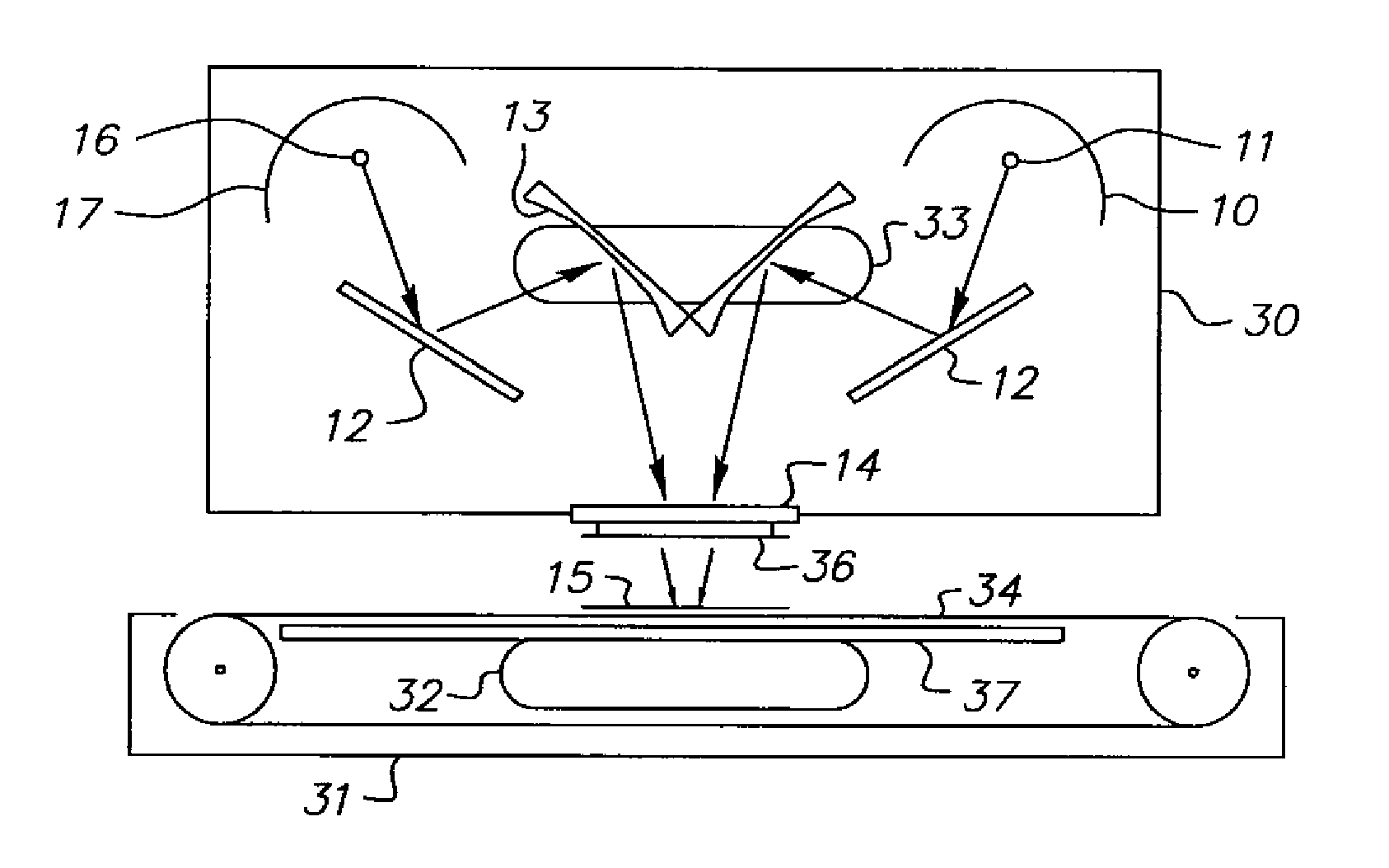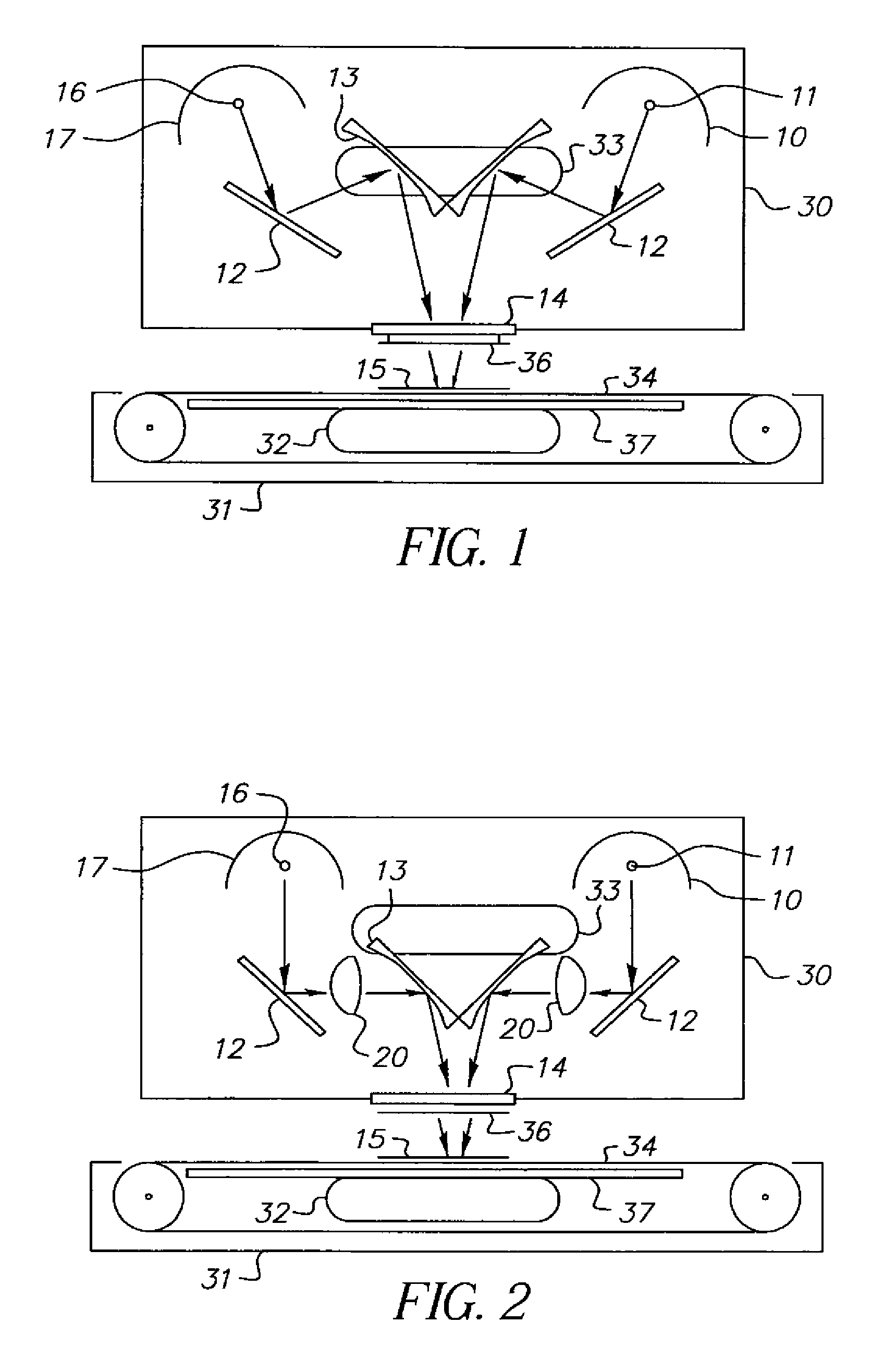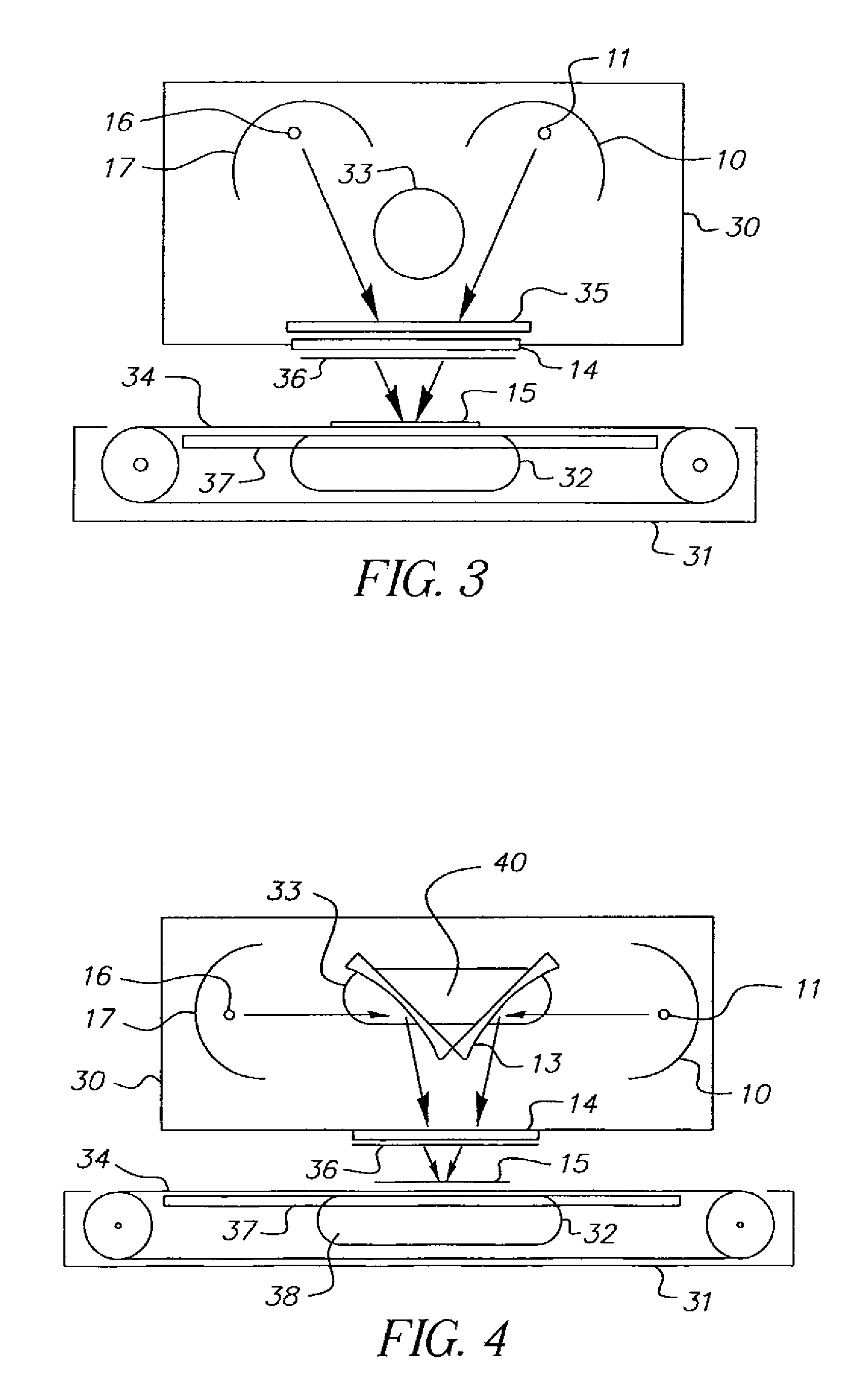UV cure equipment with combined light path
a technology of ultraviolet light and cure equipment, which is applied in the direction of optical radiation measurement, spectrometry/spectrophotometry/monochromator, nuclear engineering, etc. it can solve the problems of not disclosing the method of photo-curing the ink on the heat-sensitive substrate, the drying process of opaque conductive inks requires many minutes to cure the ink, and the inability to modify information, etc., to achieve rapid and complete polymerization, rapid and complete curing
- Summary
- Abstract
- Description
- Claims
- Application Information
AI Technical Summary
Benefits of technology
Problems solved by technology
Method used
Image
Examples
example 1
[0110]Samples of Plain PET, Merck BL118 only, Merck BL 118 over coated with either a Black or Blue contrast layer were screen printed with EXGHAAMJ-AG conductive UV curable ink from Allied Photochemical. The samples were then cured using a Dual lamp fusion UV unit and conveyor system and tested for resistivity.
Black Nano and LC Coated Samples Composition
[0111]An aqueous coating dispersion layer of the chiral nematic composition was prepared containing 5 wt % gelatin, 8 wt % droplets of Merck BL118 obtained from Merck, Darmstadt, Germany and 0.20 wt % of coating surfactant. Microscopic analysis showed that the dispersion consisted of uniform 8 micron droplets of the liquid crystal in an aqueous gelatin medium. A second coating solution was prepared with 4 wt % gelatin and a mixture of nanopigments milled to less than 1 micron in size was formulated to provide a neutral black density. The two layers were coated and together had a resulting dried thickness of 14 microns.
Blue Nano and L...
example 2
Black Nano and LC Coated Samples Composition
[0119]An aqueous coating dispersion layer of the chiral nematic composition was prepared containing 5 wt % gelatin, 8 wt % droplets of Merck BL118 obtained from Merck, Darmstadt, Germany and 0.20 wt % of coating surfactant. Microscopic analysis showed that the dispersion consisted of uniform 8 micron droplets of the liquid crystal in an aqueous gelatin medium. The solution was mixed with gelatin crosslinker bisvinylsulfonylmethane at 3 wt % relative to the total amount of gelatin immediately before coating.
[0120]A second coating solution was prepared with 4 wt % gelatin and a mixture of nanopigments milled to less than 1 micron in size was formulated to provide a neutral black density (CMYK) layer. The two layers were coated and together had a resulting dried thickness of 14 microns.
Carbon Black Nano and LC Coated Samples Composition
[0121]An aqueous coating dispersion layer of the chiral nematic composition was prepared containing 5 wt % g...
example 3
[0131]The samples utilized above in Example 2 were also evaluated for thermal sensitivity. Once samples were printed and cured, the thermal transition of the coating was evaluated to determine the impact of the quartz and IR filters on the elimination / reduction of thermal transition (without impacting resistivity). The thermal transition was evaluated by visually looking at each sample to identify the existence of thermally transitioned liquid crystal.
[0132]
TABLE 3QuartzHeat Sink / ThermalSample #Coating typeLamp: S* or D**plusExchangertransition3-1BL 118Snonenone33-2BL 118Dnonenone33-3BL 118D+1Rnone33-6BL 118D+2Rnone33-6BBL 118Dnoneyes33-9BL118 with CMYKSnonenone33-10BL118 with CMYKDnonenone13-11BL118 with CMYK &D+1Rnone1hardener3-13BL118 with CB &D+1Rnone1hardener3-15BL118 with CMYKD+1Rnone13-18BL118 with CMYK &D+2Rnone1hardener3-20BL118 with CB &D+2Rnone1hardener3-22BL118 with CMYKD+2Rnone13-22BBL118 with CMYKDnoneyes33-23BBL118 with CB &Dnoneyes3hardener3-25575 nm LC with CMSnonen...
PUM
| Property | Measurement | Unit |
|---|---|---|
| thickness | aaaaa | aaaaa |
| thickness | aaaaa | aaaaa |
| diameter | aaaaa | aaaaa |
Abstract
Description
Claims
Application Information
 Login to View More
Login to View More - R&D
- Intellectual Property
- Life Sciences
- Materials
- Tech Scout
- Unparalleled Data Quality
- Higher Quality Content
- 60% Fewer Hallucinations
Browse by: Latest US Patents, China's latest patents, Technical Efficacy Thesaurus, Application Domain, Technology Topic, Popular Technical Reports.
© 2025 PatSnap. All rights reserved.Legal|Privacy policy|Modern Slavery Act Transparency Statement|Sitemap|About US| Contact US: help@patsnap.com



